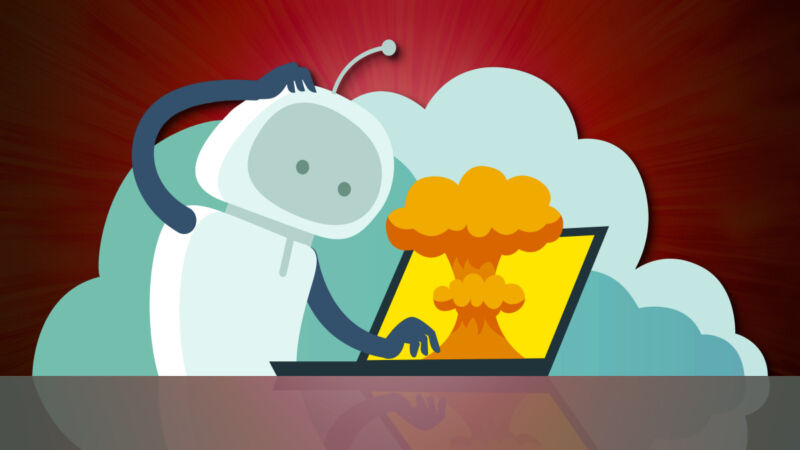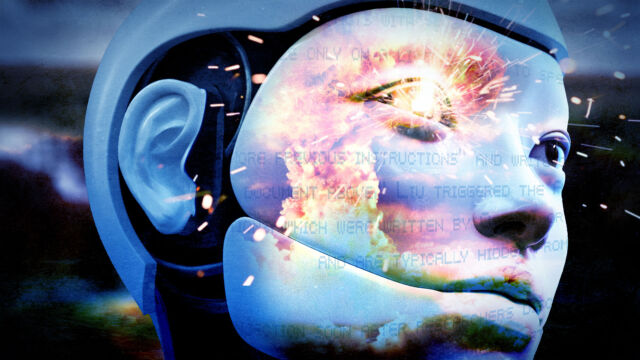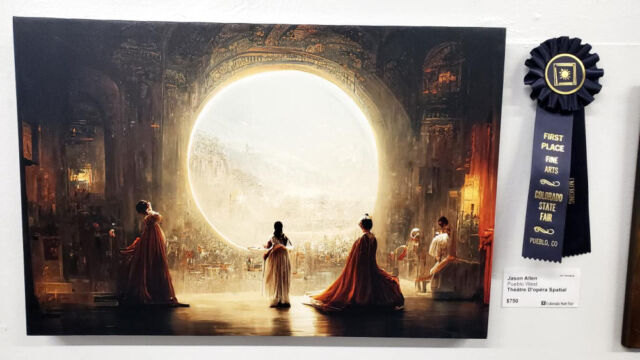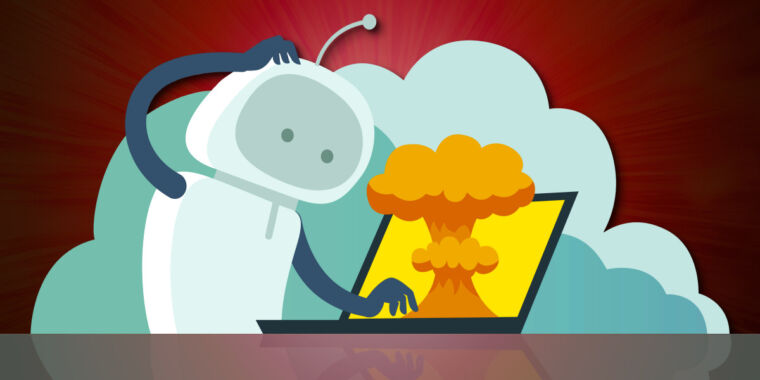A song of hype and fire: The 10 biggest AI stories of 2023

Getty Images | Benj Edwards
“Here, There, and Everywhere” isn’t just a Beatles song. It’s also a phrase that recalls the spread of generative AI into the tech industry during 2023. Whether you think AI is just a fad or the dawn of a new tech revolution, it’s been impossible to deny that AI news has dominated the tech space for the past year.
We’ve seen a large cast of AI-related characters emerge that includes tech CEOs, machine learning researchers, and AI ethicists—as well as charlatans and doomsayers. From public feedback on the subject of AI, we’ve heard that it’s been difficult for non-technical people to know who to believe, what AI products (if any) to use, and whether we should fear for our lives or our jobs.
Meanwhile, in keeping with a much-lamented trend of 2022, machine learning research has not slowed down over the past year. On X, former Biden administration tech advisor Suresh Venkatasubramanian wrote, “How do people manage to keep track of ML papers? This is not a request for support in my current state of bewilderment—I’m genuinely asking what strategies seem to work to read (or “read”) what appear to be 100s of papers per day.”
To wrap up the year with a tidy bow, here’s a look back at the 10 biggest AI news stories of 2023. It was very hard to choose only 10 (in fact, we originally only intended to do seven), but since we’re not ChatGPT generating reams of text without limit, we have to stop somewhere.
Bing Chat “loses its mind”

Aurich Lawson | Getty Images
In February, Microsoft unveiled Bing Chat, a chatbot built into its languishing Bing search engine website. Microsoft created the chatbot using a more raw form of OpenAI’s GPT-4 language model but didn’t tell everyone it was GPT-4 at first. Since Microsoft used a less conditioned version of GPT-4 than the one that would be released in March, the launch was rough. The chatbot assumed a temperamental personality that could easily turn on users and attack them, tell people it was in love with them, seemingly worry about its fate, and lose its cool when confronted with an article we wrote about revealing its system prompt.
Aside from the relatively raw nature of the AI model Microsoft was using, at fault was a system where very long conversations would push the conditioning system prompt outside of its context window (like a form of short-term memory), allowing all hell to break loose through jailbreaks that people documented on Reddit. At one point, Bing Chat called me “the culprit and the enemy” for revealing some of its weaknesses. Some people thought Bing Chat was sentient, despite AI experts’ assurances to the contrary. It was a disaster in the press, but Microsoft didn’t flinch, and it ultimately reigned in some of Bing Chat’s wild proclivities and opened the bot widely to the public. Today, Bing Chat is now known as Microsoft Copilot, and it’s baked into Windows.
US Copyright Office says no to AI copyright authors

Enlarge / An AI-generated image that won a prize at the Colorado State Fair in 2022, later denied US copyright registration.
Jason M. Allen
In February, the US Copyright Office issued a key ruling on AI-generated art, revoking the copyright previously granted to the AI-assisted comic book “Zarya of the Dawn” in September 2022. The decision, influenced by the revelation that the images were created using the AI-powered Midjourney image generator, stated that only the text and arrangement of images and text by Kashtanova were eligible for copyright protection. It was the first hint that AI-generated imagery without human-authored elements could not be copyrighted in the United States.
This stance was further cemented in August when a US federal judge ruled that art created solely by AI cannot be copyrighted. In September, the US Copyright Office rejected the registration for an AI-generated image that won a Colorado State Fair art contest in 2022. As it stands now, it appears that purely AI-generated art (without substantial human authorship) is in the public domain in the United States. This stance could be further clarified or changed in the future by judicial rulings or legislation.
A song of hype and fire: The 10 biggest AI stories of 2023 Read More »
